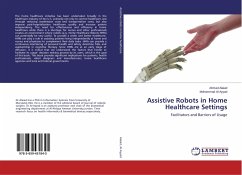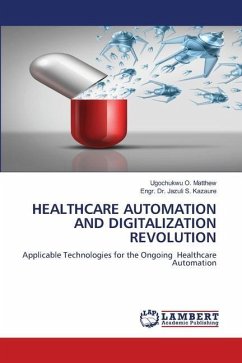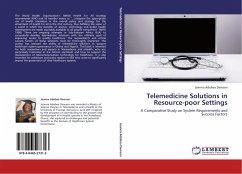
Assistive Robots in Home Healthcare Settings
Facilitators and Barriers of Usage
Versandkostenfrei!
Versandfertig in 6-10 Tagen
36,99 €
inkl. MwSt.

PAYBACK Punkte
18 °P sammeln!
The home healthcare initiative has been undertaken broadly in the healthcare industry of the U.S. primarily not only to control healthcare cost through reducing readmission costs and transportation costs, but also improve post-hospitalization healthcare quality and increase patient independency. The need for effectiveness and efficiency in home healthcare while there is a shortage for nurses and other professionals creates an environment where robots (e.g. Home Healthcare Robots HHRs) can potentially be very useful. To provide a wider and better healthcare, HHRs can play a role in assisting pa...
The home healthcare initiative has been undertaken broadly in the healthcare industry of the U.S. primarily not only to control healthcare cost through reducing readmission costs and transportation costs, but also improve post-hospitalization healthcare quality and increase patient independency. The need for effectiveness and efficiency in home healthcare while there is a shortage for nurses and other professionals creates an environment where robots (e.g. Home Healthcare Robots HHRs) can potentially be very useful. To provide a wider and better healthcare, HHRs can play a role in assisting patients living independently at home and nurses and physicians to complement their daily tasks. HHRs can provide a continuous monitoring of personal health and safety, detection falls, and assistantship in cognitive therapy. Since HHRs are at an early stage of diffusion, it is critical that we understand the factors that hinder or facilitate its usage' decision making process by its users, which is the goal of this book. This book provides significant implications for patients, health professionals, robot designers and manufacturers, home healthcare agencies and local and federal governments.












